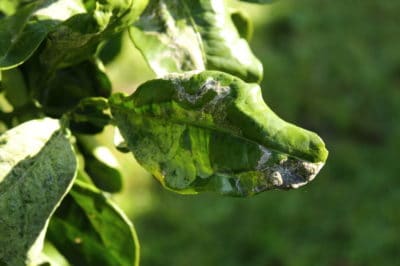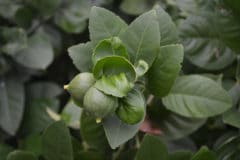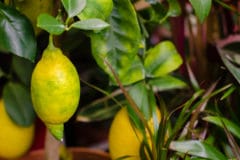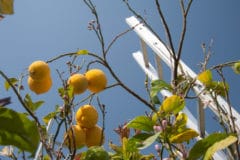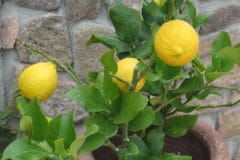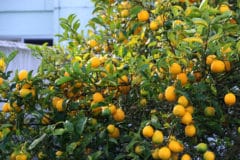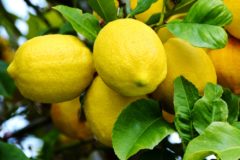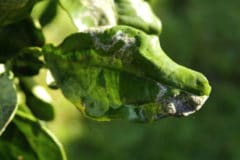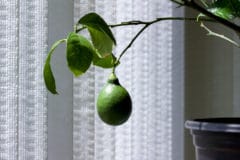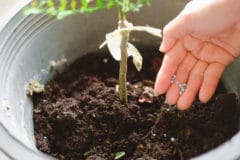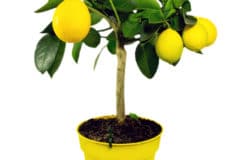Frost and Curling Lemon Leaves
When the thermometer hits the freezing mark, lemon trees suffer leaf damage. It begins with wilting; if the temperature drops below 29°F (-1.6°C) for more than 30 minutes, the leaves become brittle, hard and curled.
If the branches survive and the damage isn’t lethal, theleaves will thaw and recover. Otherwise, they’ll drop and new ones will emerge.
Frost Protection
To protect your lemon tree from frost:
- Water deeply and slowly as soon as the forecast calls for freezing temperatures. This compensates for the root’s moisture loss in frozen soil.
- Weave electric holiday lights through the canopy and keep them turned on during the cold snap.
- Drape the tree with frost cloths.
Inadequate Watering
Water-deprived lemon trees get curled leaves. Outdoor trees are most susceptible during extended spells of hot, dry weather.
First-Year Watering
For three months after planting, water every two to five days. For the next nine months, water:
- Every five to seven days from late spring to early fall.
- Every five to 10 days from mid- to late fall
- Every two weeks in winter.
Watering an Established Tree
Water an established lemon every two weeks, or every 10 days during very hot or dry weather. Soak it slowly and deeply around the drip line at the edge of the canopy.
Watering a Potted Tree
Water an outdoor or indoor potted lemon tree when the growing medium looks and feels dry. Soak it until water runs from the drainage holes.
Insects and Leaf Curl
Soft-bodied insects — including aphids, whiteflies, mealybugs and psyllids — colonize lemon trees to feast on sap. Curling leaves covered in sticky honeydew waste are a classic sign of infestation. The pests target both outdoor and indoor trees.
Insect Control
With early detection, a strong stream of water may be enough to blast the insects off the tree . To control large a population, mix 1 tablespoon (15ml) of mild liquid dish soap in 1 cup (236ml) of vegetable oil.
Make a spray solution containing 4 to 8 teaspoons (20 to 40ml) of the soap/oil mixture for every 1 quart (.95L) of water. In early morning or late afternoon, spray your tree until it drips. Be sure to coat the undersides of the leaves and repeat weekly until the problem is gone.
